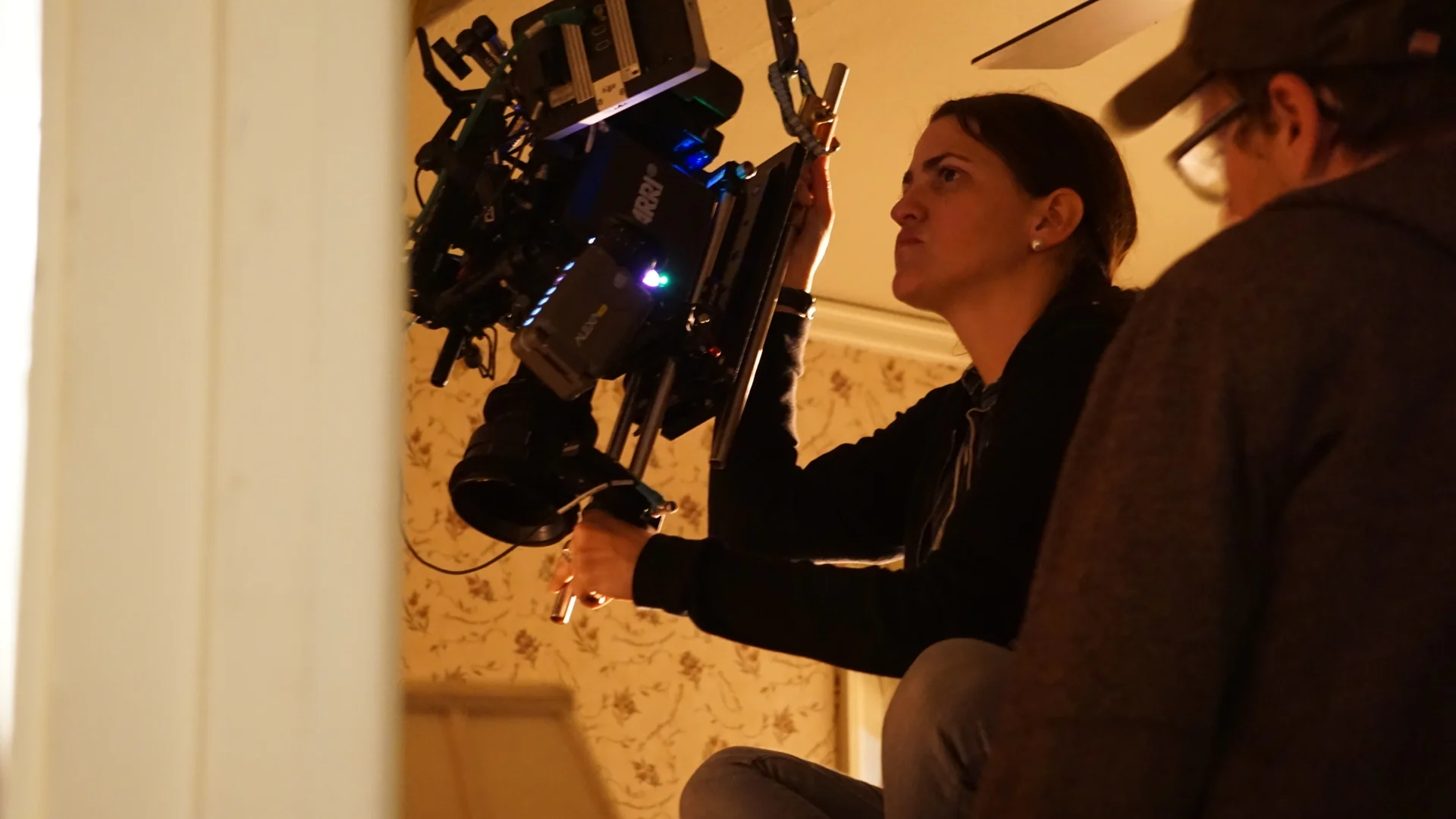
Amanda Treyz
How did you become involved in the film?
My friend Doug Bilitch, a producer with Kids at Play, sent me the script for Toll Road. I read it, loved the story and the characters and also saw the opportunity for some interesting stylistic choices. I then had a Skype interview with Tom right after he finished performing in a play one night. It was so short I thought I hadn't got the job. When I heard Tom wanted me to do it, I was very relieved and exited. We had been chatting at about 11.30pm his time; I think he was just tired.
The Toll Road has a very unique look. How did you come up with it and why did you choose it?
Tom had some references going in; he wanted the exterior sections on the road to have a washed-out bleakness to them that would contrast with the quirky warmth of the home environment. The hardest part of finding that look was settling on the perfect level of saturation. We wanted these characters to inhabit two distinct environments, but we also wanted these environments to feel like part of the same world.
Two 12 hour days is a very intense shooting schedule. How did you make it work?
By working as fast as possible. On the first day we wanted to see the sun setting over a particular mountain in a particular shot. You know that energy on-set when the sun is going down, and you have a few shots to get and people gear up into 'oh crap' mode? When I showed up on set that first day, I knew the only way we'd get that shot at the right time was if we worked at that pace all day. When we got to that shot the sun was right where we wanted it. We hurried, we got the shot, and the sun was gone at the end of the third take. We celebrated for a very brief moment before rushing to get our magic hour shots.
What was the biggest challenge on set for you?
See above. But seriously, time was a huge factor on this one. As a cinematographer, I never want to force a director into a choice on set in the moment that they might regret later. There was a pivotal scene we shot late in the movie and we had no time to do coverage. On set, I felt like the scene was nice in a wide, but I really wanted to give Tom the option for the edit. He knew in the moment that the scene would work as a oner and in the movie, so he made the call. I now love the way it plays. It's so perfect for the tone of the piece and where the story is at that point that I'm actually glad we didn't cover it.
Talk about the choice of lenses, why you chose them, and what the pros and cons of that choice was?
We shot this film on a set of Lomo Anamorphics which worked really well for this story. The lenses are by nature a bit unpredictable. One of our lenses had a loose front element that we had to occasionally nudge into correct alignment so buildings didn't look like they were about to topple over. The lenses are old, from the 60s and they do crazy things to the image, especially at the edges. Sometimes you're forced into a more centered composition if something important gets too warped on the side, but they were perfect for this movie. All the weird organic artefacts just served to make the environment feel different and magical. That said, they were VERY difficult to work with. Every lens was a wildly different shape. Some of them were actually falling apart. Lens changes took a while cause we had to adjust everything for each lens. All in all I think they added a lot, and despite the problems, I'd use them again.
Which part of the way the movie was shot are you proudest of?
I'm most proud of the fact that I think all the choices we made came together in a cohesive way and the film as a whole is successful. The night interior scene exemplified this to me: We wanted it hand held, but overhead, so we built a big complicated rig we used for that one shot. The shot in the movie doesn't stand out as obtrusively hard to accomplish, it just fits in to the flow very well. You don't notice it while watching the movie, but if you take a second to think about it, you realize it's more complicated than it seems at first glance.
How did your relationship with Tom work?
Tom had a lot of experience as an actor, on-set and with filmmaking, so he definitely didn't feel like a first time director. He had a clear vision and was incredibly passionate about the story and the project. He always pushed for creative, interesting choices. It was fun getting to see him experience life on the directing side for the first time. Maybe because it was his first time, or maybe because Tom is like this as a person, but he was incredibly communicative. It helped us get on the same page right away, and it made me feel comfortable making suggestions, even if they were a little outside the box.
What are you working on currently?
I just finished two instalments in Hulu's horror series "Into the Dark." The first one is called Flesh & Blood and it’s coming to Hulu in November.
